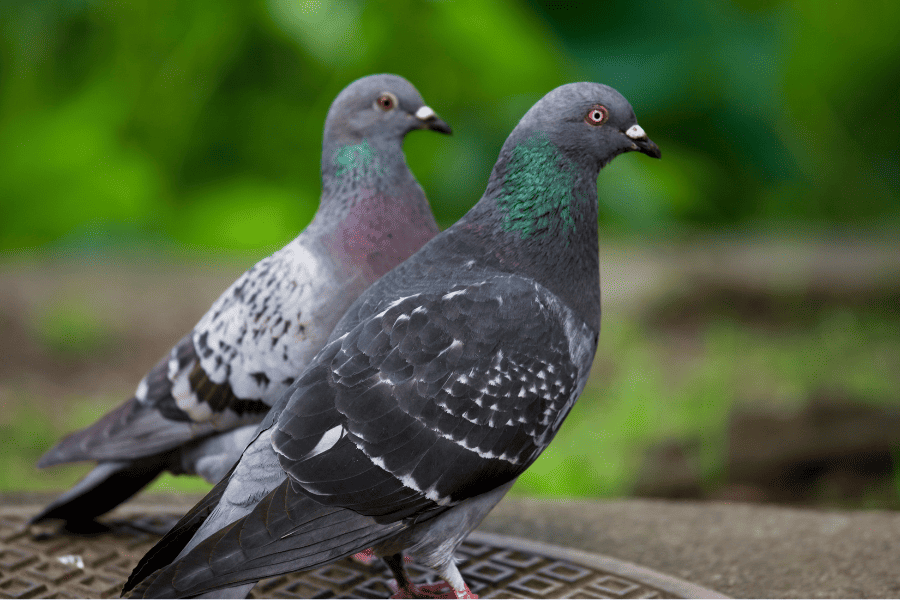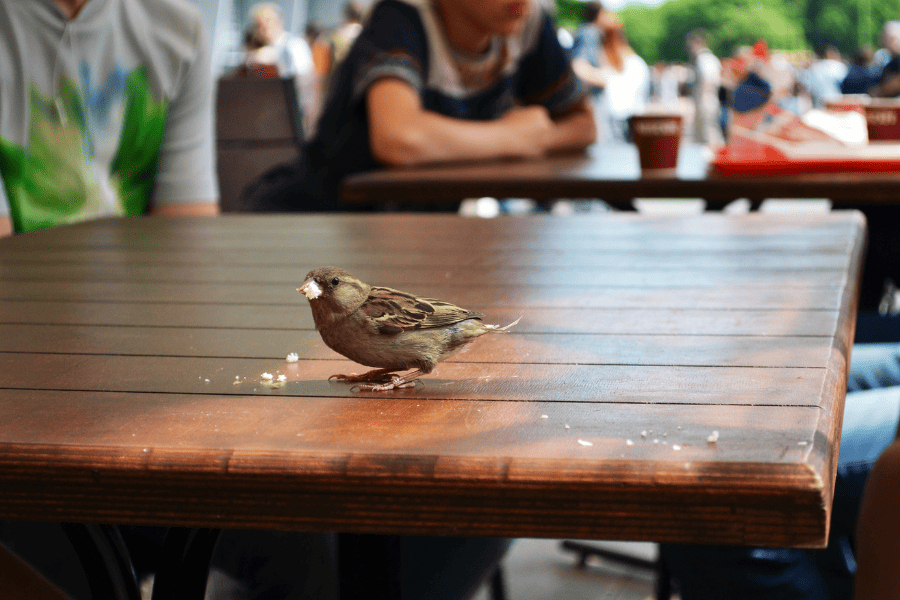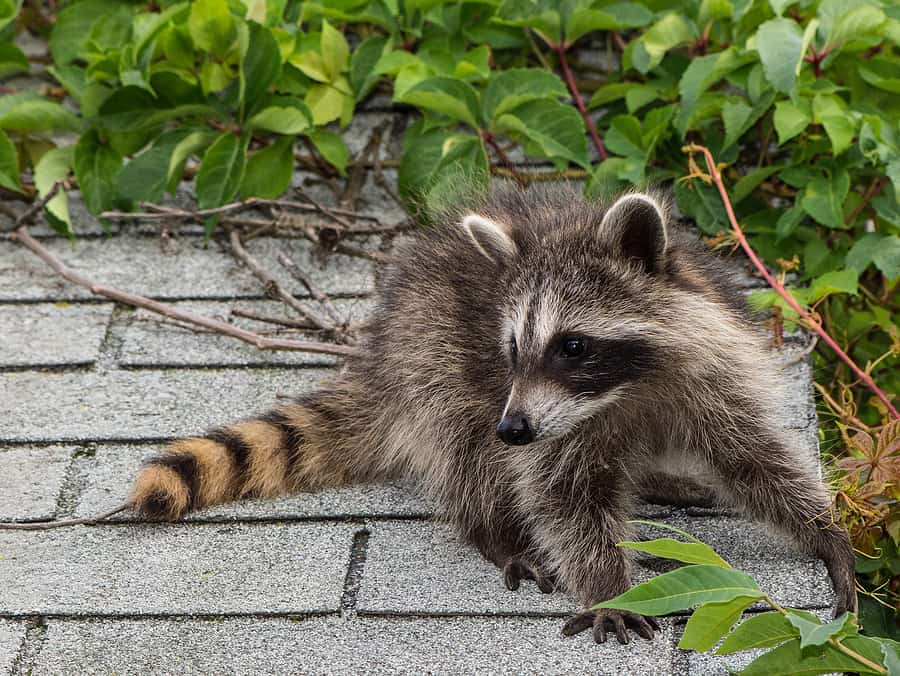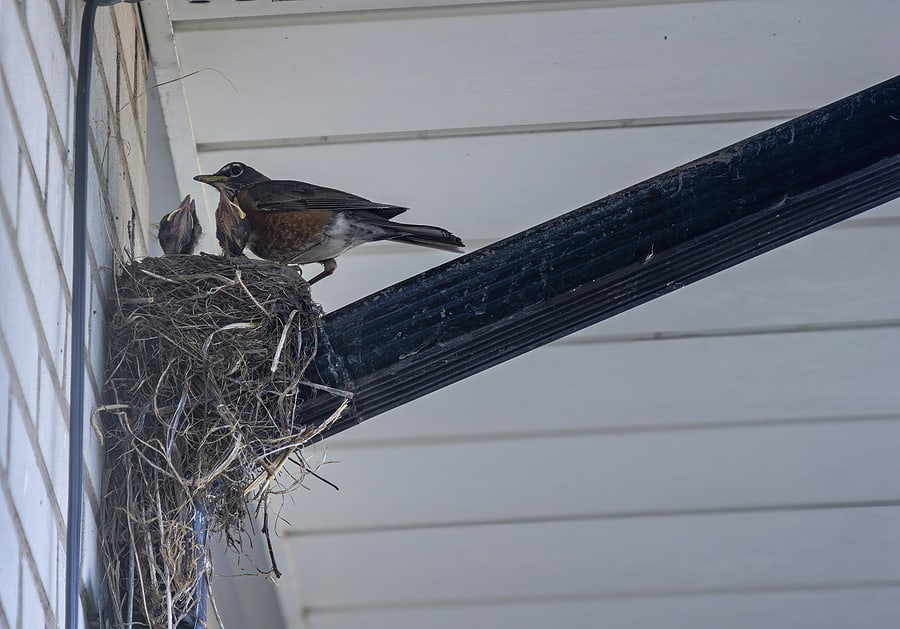READY TO GET STARTED?
REQUEST A FREE ESTIMATE
Fill out the form below or call (888) 466-7849 for a free, no-obligation estimate.

When left unaddressed, birds can wreak havoc on your business. As a business owner, protecting your reputation and bottom line is crucial to your success. We breakdown the dangers nuisance birds can be to your business if invaded and bird control methods you can place to deter them away.
Birds can cause many problems for your business and property. It’s crucial to understand the issues birds can bring so you can effectively deter them.
One of the best ways to deter these nuisance birds away is to create an environment that’s less attractive to them. Check out these humane preventative tips to keep birds from invading your business.
This method can act as a barrier to keep birds away from your building. The netting is often made of polypropylene and has stainless-steel hardware, which can be invisible to your customers’ eyes. It can best protect your business from smaller birds like swallows and sparrows. Bird netting can protect areas such as loading docks, rooftops, courtyards, storefront signs, balconies, open beam structures, and more.
Spikes are harmless deterrents that work great to deter birds, such as pigeons, away from a structure. Spikes are made from stainless steel or plastic and are placed upward to make it difficult for birds to land or make it uncomfortable to roost. Spikes can be placed on ledges, parapets, gutters, signs, and more.
Visual deterrents or decoys are a great tool to utilize around your business property to deter birds. Decoys that resemble owls or other predators can scare birds away. Other deterrents include holographic and reflective materials like optical gel, scare tape, and more. This method can be a great addition to other bird control methods you have already placed at your business.
If you’ve seen more bird activity than you’re comfortable with around your business, call your local professional wildlife control team for assistance. These bird experts will provide you with the best options to prevent the nuisance birds, deter them from your property, and control them to avoid a future bird infestation.

As much as birds are necessary, they can become a nuisance once they begin invading and damaging your business property and causing health concerns for your customers and employees. Whether it’s a restaurant, warehouse, commercial building, or store, these wildlife creatures can threaten your business’s bottom line. One of the best bird control methods to keep these birds from invading your business property is to create an undesirable environment for them. If you’re experiencing an influx of bird activity, there are several methods you can utilize to safely deter them from your business.
Create an environment less inciting to birds by removing limbs and branches from your business property. Additionally, look to routinely trim any surrounding trees around your property and if you have a lawn keep it mowed.
Consider mounting a plastic hawk or owl decoy on the roof of your building to scare nuisance birds away. Bird spikes and optical gel are another great tool to place on top of the building to encourage birds to perch and nest elsewhere.
Many birds are known to create nests around or under HVAC units because of the availability of water and shelter. To avoid this, consider netting or blocking off the area around your HVAC unit. If larger areas need excluding, it’s best to contact your local pest management company for assistance.
Birds will continue to visit your property if there’s access to food sources. It’s crucial to make food and water sources inaccessible as much as possible by promptly removing all food debris and standing water. Likewise, discourage customers from feeding birds if they happen to land around your business.
There are state rules and regulations on controlling birds from properties, so it’s best to contact your local wildlife control company to assist with any bird nuisance. These bird control professionals will provide you with a thorough inspection of your business and recommend the best methods to remove and prevent these birds from your property in the future.

Did you know birds can be just as much of a nuisance (and potential health threat) as roaches and rodents? Common nuisance birds include pigeons, woodpeckers, sparrows, starlings, and Canadian geese.
Birds can cause a whole host of problems around your home and property. They can fly into your home and windows. They can build nests on or near your home, causing damage to your house or just being a noisy pest. Nests can clog gutters, downspouts, drains, vents, and chimneys. Bird droppings contain uric acid and can eat away at paint and building materials on cars and homes.
Birds and their droppings are known to carry over 60 diseases including E. coli, salmonellosis, and cryptococcosis.
Anytime you’re dealing with birds it’s important to remember that many species are protected by federal and/or state regulations, as is bird nest removal.
Visual bird deterrents are products designed to scare off birds or prevent them from landing or roosting where you don’t want them to. Their efficacy depends on the type of bird you are dealing with and the type of deterrent you are using. There is a wide range of choices when it comes to these deterrents. Many include gel because its reflective surface looks like fire to birds. It also feels sticky if birds land on it. Some of these deterrents are also scented, many with peppermint oil, to also help deter birds from getting near them.
Predator decoys can be effective for a short period of time but aren’t usually good for long-term use. It is important to choose a realistic predator for the bird species you are dealing with. If owls aren’t a natural predator of the bird you are dealing with, a decoy owl won’t work very well. It is also important to rotate or move the decoy frequently so birds don’t realize it isn’t real.
There is a wide range of products you can use as a reflective deterrent, from prefabricated spirals to DIY aluminum foil strips. The most important thing to remember is to use something highly reflective that also moves with the wind. It also helps to move it around frequently or even take it down for a while to trick the birds into thinking it’s real.
These are narrow spikes that attach to window sills, roofs, eaves, or any other large areas you want to keep birds off of. They can attach to concrete, wood, or other surfaces with screws or glue. The spikes can be metal or plastic. These deterrents are most effective against pigeons, crows, and gulls and are less effective against smaller types of birds.
Bird coils are similar to spikes. They are extendable stainless steel coils that stretch along ledges to deter birds from landing on them. If they do, the coils move and make the bird feel unstable, making them less likely to perch and roost.
Bird wire is a tension wire system that creates an unstable landing area to deter birds from landing. Bird wire is more low profile compared to spikes or coils and can be used on exposed ledges, beams, and pipes. The negative to bird wire is that it can be time-consuming and difficult to install.
Bird netting is commonly used in gardens or on fruit trees but can also be used under roofs and around eaves. Bird netting is less expensive than other deterrent methods. It is important to remember when installing bird netting that you don’t cut out sections of the net to fit around obstructions; instead, cut a slit in the netting, slide the obstruction through it, and then reseal it when it’s above the object. One negative to netting is that birds can get stuck in the net.
Birds usually come to your home or yard in search of a nesting site, food, or water. Eliminating these things will make your property less appealing to them. Install bird netting over gardens to keep them from getting to your fruit. Keep trash cans covered. Clean your gutters to prevent standing water or install gutter guards. Don’t use birdfeeders in the warmer months. If you do use birdfeeders, don’t use suet or corn in them. Instead, replace with whole peanuts, safflower seeds, or sunflower seeds in the shell.
The best way to keep birds out of your home is to make sure they don’t have a way in. Carefully inspect the exterior of your home or other outbuildings and seal any openings you find, especially those that lead to the attic. Block any openings to eaves or vents with 1/4″ wire mesh or netting.
Bird and bird nest removal can be a difficult (and sometimes illegal) job. If you have a problem with birds this season, contact your local pest control company who can properly identify the types of birds you are dealing with, along with the most appropriate elimination and prevention methods for you.
What Attracts Snakes to Your Yard?

Now that winter is here, it is time to make sure your attic is not harboring wildlife from the cold. The most common pests that find refuge in attics are racoons, squirrels, bats, birds, and mice. These pests can cause severe damage to your home and pose a significant threat to your health.
There are many ways for wildlife creatures to get into your home. The most obvious ways are through vents and construction gaps. These can sometimes be unavoidable, since rodents can squeeze through cracks as small as half an inch wide. Some of the pests can be taken care of with DIY pest control, but some do need professional attention. Bats are a pest that you should not take care of yourself. They can carry rabies and some species are protected.
The damage that can be caused in your attic can be anything from chewed wires to disturbance to your insulation, which can end up being costly for you. There are many ways to implement wildlife control in your attic. Here are a few of our favorites below:
If you believe that you have wildlife in your attic, consider calling your local pest control company to help locate entry points, safely remove them, and prevent them from entering your house in the future.

Birds have been known to build their nests in the most inconvenient places around your home – above doors, over your garage, inside your shed, on top of your lawnmower, in heat pumps, and any number of other high traffic or hazardous areas. Although birds don’t typically pose a serious threat to humans, they can cause damage to your roof, car, and property. Their nests can block stove, dryer, and fan vents causing fire hazards and rendering them useless. Their nests can also clog gutters and drains, leading to standing water and potential damage to your roof. Their droppings contain uric acid which can damage the paint on your car. Bird droppings also contain pathogens that are dangerous to humans like histoplasmosis. Bird nests can also contain other pests such as mites, parasites, and ticks that can stick around long after the birds have left the nest.
Your first reaction when encountering a nuisance bird may be to just remove the nest. However, there are Federal laws regarding bird nest removal that make it illegal to remove certain species of birds or their nests. Best practice is always to check with a wildlife control company before attempting to remove any bird nests from your home.
Here are some steps to take to ensure both proper and safe bird nest removal and/or relocation.
The best way to eliminate bird nests from your property is to prevent them from building in the first place. Remove any food scraps and open trash from around your home as this invites them to feed. Make sure trash is secured tightly in containers. Place any bird feeders and birdbaths away from the home and further out in the yard. Only put out enough food for a few birds and clean up any spills regularly. Consider installing gutter guards to prevent nesting in gutters and downspouts. Vents are a common nesting place for birds so install vent covers and screens. Use perch repellents if necessary; these are rows of bird spikes installed on ledges, window sills, and around the perimeter of the roof to prevent birds from alighting on perches. You can also use visual repellents such as plastic owls, hawks, snakes, and even coyotes. If you use visual repellents, make sure to move them often as the birds will get used to them being in one place. Hang reflective bird diverters from strings on your porch also.
The best time to remove a nest is when it is still in the building stage. If you notice a bird nest already built or remove one this season, keep an eye out in the same area next season and stop it before it is fully completed.
Always make sure a nest is inactive before removing or relocating it. Never attempt to remove or relocate a nest if there are birds or eggs present. It is best to wait until after nesting season for any removal or relocation. Eggs in a nest without signs of the parents don’t necessarily mean the nest has been abandoned. The parents may be out feeding or they may have left to allow the eggs a chance to cool down.
The best time to remove or relocate a nest is after nesting season is over. Most birds only nest once per year; however, some species will nest 4 to 5 times. The time varies with the species of bird. Without knowing the specific species of bird, it is difficult to determine the best time to remove or relocate the nest. A professional wildlife exclusion expert can help identify the species you are dealing with and help determine the best time to remove the nest.
Once you have positively identified the species of bird you have, confirmed it is legal to remove the nest, and have made sure the nest is inactive and no eggs are present, you can proceed with removing or relocating the nest. Bird nests can harbor other pests and residual bird droppings that can contain dangerous pathogens for humans. Make sure to wear long sleeves, long pants, latex gloves, and a respiratory mask to protect yourself. Carefully inspect the nest to make sure it is empty of eggs and birds. Spray the nest with an antibacterial spray. Once dry, remove the nest and dispose of it in a securely sealed container or exterior trash bag. Dispose of it in the trash away from the home. Clean the area where the nest was with a strong disinfectant. Remove and dispose of your gloves. Remove your clothing and wash them immediately in hot water. Wash your hands thoroughly.
It can be difficult to determine whether or not the bird nest in or on your home is legal to remove or the best way to remove it. If you have a bird nest that is causing problems in or on your property, contact a professional wildlife exclusion company who can positively identify the species of bird you have, properly remove or dispose of the nest, and help you identify areas where nesting could be a potential issue in the future.
Can You Have Rats and Mice at the Same Time?
Wildlife Creatures to Lookout for this Winter